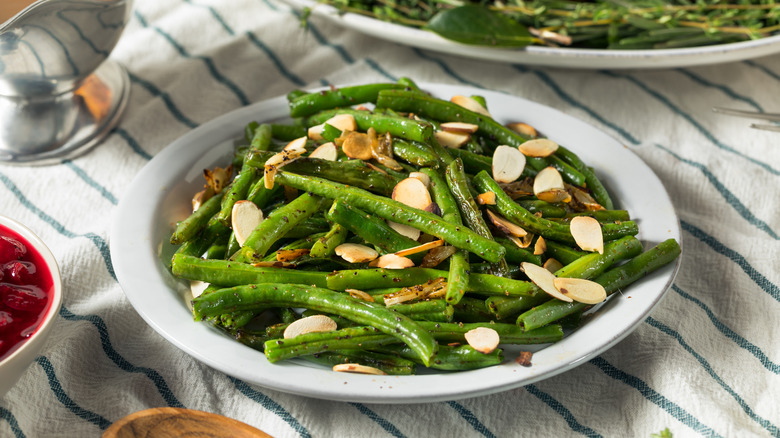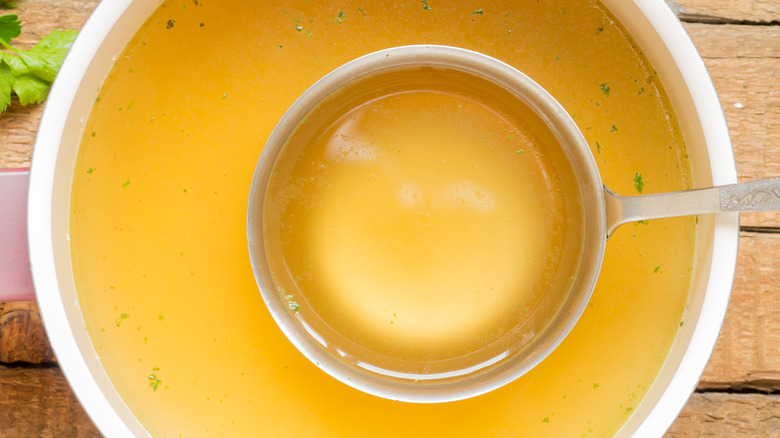Skip The Butter And Oil And Saute Veggies In Broth For A Lighter Dish
When we want to upgrade the taste of store-bought gravy mix, rice, or instant mashed potatoes, we turn to broth instead of water. Unlike the latter, broth is typically cooked in a mixture of ingredients (including garlic, onion, thyme, peppercorns, bay leaves, and often a protein like chicken or beef) that give the liquid a ton of flavor, and its thin consistency means it can easily serve as a water replacement when cooking. So, if you want to add all those aromatic, savory flavorings into your vegetables, try sauteing them in broth instead of oil or butter.
Sauteing veggies in broth is the happy medium between sauteing in fat and steaming. If you want to avoid the fat that veggies are typically cooked in for nutritional reasons, this method will point you in the right direction. Even better, you'll end up with a side dish that is lighter than what you're used to — and if you're making vegetables with your meal, there's a chance you're counting on them to balance out a richer main course anyway. On the flip side, if you typically steam your broccoli or cauliflower when you want a light side dish, cooking with broth instead will produce an end result with much more flavor.
How to saute your veggies in broth
If you're convinced to try sauteing your veggies in broth instead of oil or butter, here's how to do it. Pick the broth of your choice, keeping in mind that it will add a slight flavor to your produce. If you're trying to eliminate as much sodium as possible, go for a low-sodium broth variety. Take the brand of the liquid into consideration as well, as some may have additional sweetness from extra carrots, for example.
Then, start small with just a tablespoon or two of broth in your pan, which will prevent your veggies from sticking to the dish and burning. Once you've added your produce, season your broccoli or green beans and saute them how you normally would. If you typically go with a mixture of sauteing and steaming your veggies to soften them (as some do with broccoli), feel free to cover the pan for a few minutes as well. You can also try using a whole cup of broth, which means you can cook your produce at high heat without the risk of burning — however, this typically also means the liquid won't have fully evaporated by the time the veggies are done. It may take a little experimenting to figure out your ideal produce-to-broth ratio, but the light, tasty results will be well worth it.

